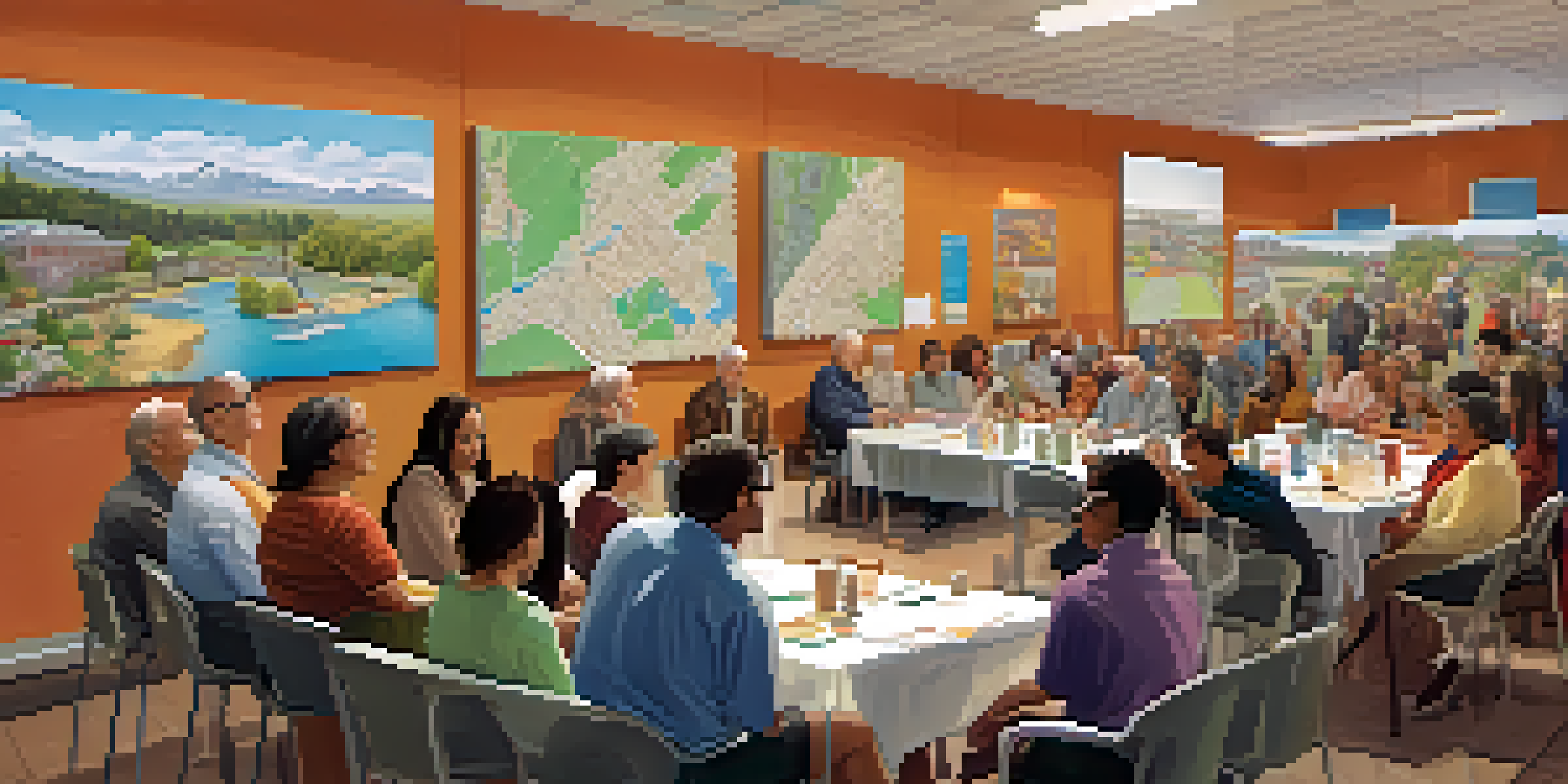Community Engagement in NYC Transit Planning and Development

Understanding the Importance of Community Engagement
Community engagement is crucial in transit planning, especially in a bustling metropolis like New York City. It allows residents to voice their needs and concerns, ensuring that transit developments reflect the community's values. When people feel heard, they are more likely to support changes that affect their daily lives.
The best way to predict the future is to create it.
Involving community members early in the planning process can lead to more innovative solutions that address specific local challenges. For instance, feedback from commuters can highlight the need for better accessibility features or improved scheduling. This collaboration can lead to transit systems that are not just functional but also user-friendly.
Moreover, community engagement fosters a sense of ownership among residents. When individuals see their ideas being implemented, they are more inclined to use the new transit systems, which can enhance overall ridership and satisfaction. Ultimately, effective engagement leads to a more efficient and responsive transit network.
Methods of Engaging Communities in Transit Development
There are various methods that NYC transit planners use to engage communities. Public meetings and workshops are traditional yet effective ways of gathering input from residents. These gatherings provide a platform for open dialogue, allowing community members to express their thoughts and ask questions directly to planners.

Additionally, digital engagement tools, such as surveys and social media platforms, have become increasingly popular. These tools offer a convenient way for people to share their opinions, especially for those who may not be able to attend in-person meetings. By utilizing multiple engagement methods, planners can reach a wider audience and gather more diverse feedback.
Community Voices Shape Transit Plans
Engaging residents early in transit planning ensures that developments meet their needs and reflect community values.
Another effective approach is partnering with local organizations and advocacy groups. These partnerships help bridge the gap between transit authorities and hard-to-reach populations, ensuring that all voices are represented. This collaborative effort not only enriches the feedback but also helps build trust between transit agencies and communities.
Challenges in Community Engagement for Transit Projects
Despite its importance, community engagement in transit planning is not without challenges. One significant hurdle is the diverse population of NYC, which includes individuals from various cultural and linguistic backgrounds. Ensuring inclusivity in the engagement process requires extra effort and resources to cater to these diverse needs.
Engagement is not just a buzzword; it’s the key to creating a community that thrives.
Moreover, not all community members may be aware of the planning processes or feel empowered to participate. This lack of awareness can lead to a skewed representation of opinions, where only the most vocal residents dominate discussions. Addressing this issue involves proactive outreach strategies to educate and encourage broader community involvement.
Finally, balancing community feedback with technical feasibility can also pose a challenge. Planners must navigate the fine line between implementing popular suggestions and ensuring that proposed solutions are practical and sustainable. Open communication about why certain ideas may or may not be feasible is essential to maintain trust and transparency.
Case Study: Successful Community Engagement in Action
A prime example of effective community engagement is the expansion of the Second Avenue Subway. Throughout the planning and construction phases, the Metropolitan Transportation Authority (MTA) held numerous public forums to gather input from local residents and businesses. This engagement not only helped identify concerns but also provided an opportunity to share project updates.
The MTA also implemented a dedicated outreach team to maintain ongoing communication with the community, addressing issues such as construction disruptions and station accessibility. This proactive approach helped mitigate tensions and fostered goodwill among residents, who felt informed and involved in the process.
Innovative Tech Enhances Engagement
Utilizing digital tools and technologies allows for real-time feedback and greater involvement from the community.
As a result, the Second Avenue Subway project has become a model for future transit developments. It demonstrated that when communities are engaged, they can collaborate with transit agencies to create solutions that work for everyone, ultimately leading to successful project outcomes.
The Role of Feedback in Shaping Transit Solutions
Feedback is a powerful tool in transit planning, shaping everything from route design to service frequency. By actively soliciting community input, planners can identify pain points and prioritize improvements that matter most to residents. This ongoing dialogue transforms feedback into actionable insights that enhance the overall transit experience.
For instance, if a significant number of commuters express frustration over long wait times on a particular route, planners can respond by adjusting schedules or increasing service frequency. Such responsive actions not only improve service but also build trust between transit authorities and the community.
Moreover, incorporating feedback into planning helps create a sense of shared responsibility. When community members see that their input leads to tangible changes, they are more likely to engage in future discussions and support ongoing transit initiatives. This cyclical process of feedback and improvement is essential for creating a responsive transit system.
Innovative Technologies Enhancing Community Engagement
In our increasingly digital world, innovative technologies are transforming how communities engage with transit planning. Mobile applications and online platforms allow residents to provide real-time feedback, report issues, and track service changes with ease. This immediacy empowers users and fosters a sense of involvement in the planning process.
Furthermore, virtual reality (VR) and augmented reality (AR) technologies are emerging tools that can enhance community engagement. These technologies allow residents to visualize proposed transit changes in a more immersive way, making it easier to understand the potential impacts of projects. This can lead to more informed feedback and a stronger connection to the planning process.
Challenges in Inclusive Participation
Addressing diverse community needs and ensuring all voices are heard remains a critical challenge in transit planning.
By embracing these technologies, transit agencies can create a more interactive and engaging environment for public input. As communities become more tech-savvy, utilizing these tools can help bridge the gap between planners and residents, ultimately leading to more effective transit solutions.
Looking Ahead: The Future of Community Engagement in Transit
As NYC continues to evolve, so too must the approaches to community engagement in transit planning. The future will likely see an even greater emphasis on inclusivity and accessibility, ensuring that all voices are heard and valued. This commitment to diversity will enrich the planning process and lead to more comprehensive transit solutions.
Additionally, as technology continues to advance, transit agencies will have opportunities to enhance their engagement strategies further. By leveraging data analytics and social media trends, agencies can better understand community needs and priorities. This data-driven approach can lead to more targeted outreach efforts and more meaningful engagement.

Ultimately, the goal of community engagement in transit planning is to cultivate a collaborative environment where residents and planners work together to create a transit system that meets the needs of all New Yorkers. By prioritizing engagement, NYC can develop a transit network that is not only efficient but also embodies the spirit of its diverse communities.